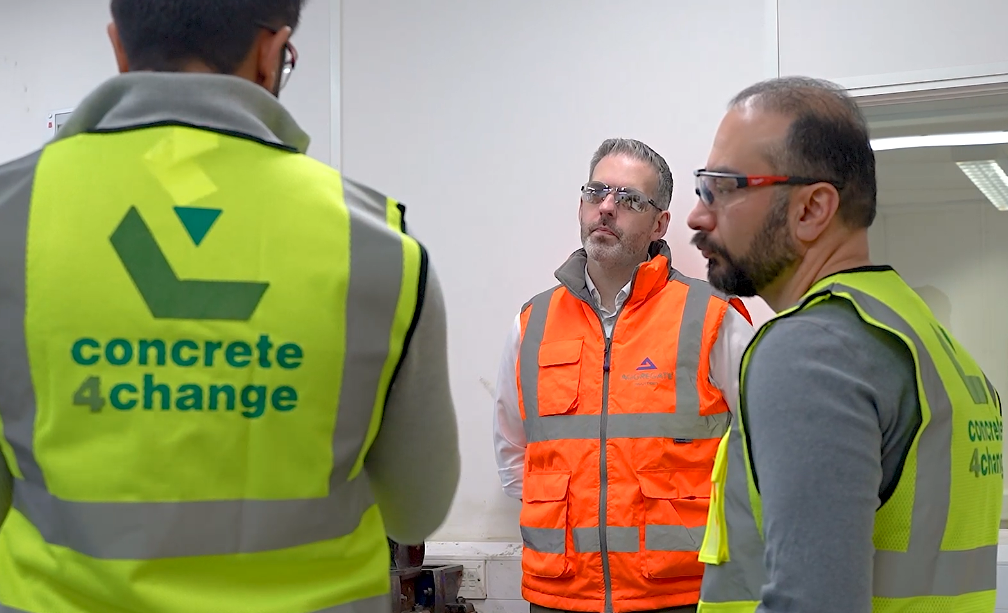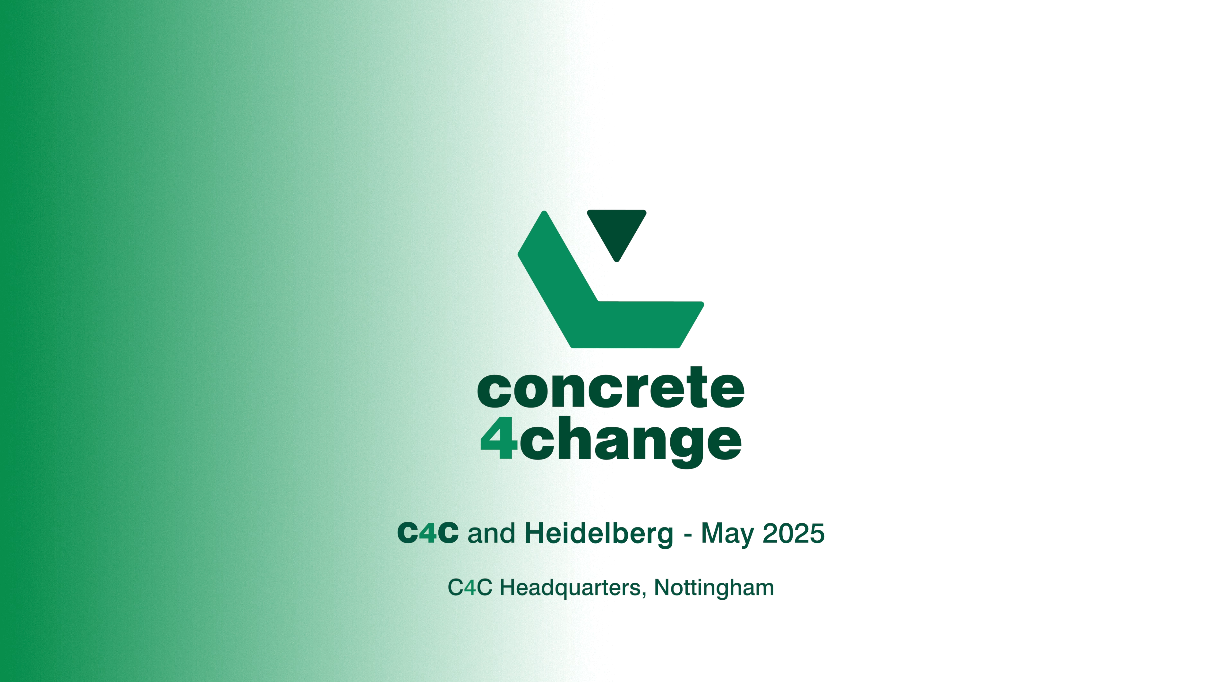Dr. Sid Pourfalah featured by the Royal Academy of Engineering Enterprise Hub

Please see the interview with the Royal Academy of Engineering:
For our October Spotlight Series blog, we spoke to Hub Member and Regional Talent Engines alumnus Dr Sid Pourfalah, a chartered engineer and entrepreneur based in Yorkshire and Humber. Sid brings a wealth of experience as CEO and founder to his startup Concrete4Change (C4C), having had 23 years of experience working in innovative and sustainable design, construction manufacturing and academia, as well as establishing two successful startups prior to C4C. In addition to this, Sid is an honorary professor at the University of Warwick.

In your own words, what is Concrete4Change?
Concrete4Change (C4C) was founded in June 2021 and is an R&D company developing ground-breaking technology to utilise and permanently mineralise carbon dioxide (CO2) in concrete, thus reducing CO2 emissions in the concrete production process. C4C’s technology has been very attractive for the construction industry – we’ve had two of the largest concrete manufacturers in the world invest in the company - Siam Cement Group and Goldbeck GmBH. We have raised £1.5 million in public grants and £3 million in private investment.
We are proud to have won a wide range of awards, such as the most innovative Net-Zero project from UN COP26 Climate Challenge in 2021 and most recently UK Business Angel Association’s Hard Tech Investment Award for 2023.
Engineering is all about solving problems. What problem is your innovation solving and what makes it ground-breaking?
Concrete is highly abundant and integral to modern society - it is the second most consumed material after water and is the most used manufactured substance globally. Concrete production accounts for approximately 8% of global CO2 emissions which is concerning as the construction industry at present, does not have a clear pathway to achieve Net Zero targets. This is where C4C comes in. C4C has engineered a concrete additive material which has an affinity for CO2 gas and acts as a CO2 carrier by adsorbing the gas onto its surface.
When exposed to industrial flues (a duct, pipe or opening which allows the release of gas from a furnace or generator) it works to contain CO2 and subsequently helps to reduce the amount released into the air. The additive material is then added to a concrete mix, where the CO2 will slowly desorb. In this way, CO2 is uniformly dispersed throughout the concrete, enabling considerably more CO2 to be incorporated into the concrete than existing methods (our analysis indicates up to 30x more). Furthermore, our solution is a much simpler way of capturing carbon compared to current approaches, which lowers costs and energy needed for the process.
What was the moment that made you think “I can turn this into a commercial opportunity”?
Construction companies are struggling to reduce their CO2 emissions, as it is not easy to find a green alternative for concrete. Some of these companies have lost large contracts as they cannot provide a carbon mitigation plan for construction plans. In addition, some public clients have set a carbon reduction plan for their projects and will only work with construction companies that can meet their targets. After speaking to many companies about their issues, I realised now is the right time to commercialise my idea and provide a novel method for construction projects to reduce CO2 emissions.
Wading into unknown territory can be unsettling – what were you most excited by and what was most challenging for you when starting out?
After my years of working in academia and industry, I found entrepreneurship to be the right lifestyle for me. I love entrepreneurship and nothing makes me happier than working in startups. The most challenging part of starting out was finding the right partners and fundraising.
Can you share a time when failure mattered in your business journey?
I started my venture through an accelerator and was hoping to get their backing. Unfortunately, we were not shortlisted by them for continued support and funding, so it was hard to keep going with the venture at that time. However, I decided to trust my instincts and carry on. I learned to never give up – regardless of what other people think about my venture.
What does a typical day look like for you at Concrete4Change?
I wake up at 5:30 am in the morning and make breakfast for my two young sons, before heading to the office around 7 am. The first thing I do is plan my day and reply to my emails for 30 minutes before I jump into meetings to discuss different R&D issues and how to overcome them. A big priority for me at the moment is developing our lab space, buying equipment, and hiring new staff. Currently, we have 14 people in our team including my partners. Throughout the day, I review our R&D results and work until 6-7 pm, which usually means I’m the last person to leave the office. But I love it!
Quick fire
Who is your role model? Ernest Hemingway- a man can be destroyed but not defeated.
Tell us a random fact not many people know about you
In the last two years, I have had two kids and founded C4C at the same time.
What’s your guilty pleasure? Cooking and eating.
When I was a child, I wanted to be... an engineer and enjoyed dismantling and rebuilding my toys.
I am currently binging Grand Designs on TV
Best piece of advice you’ve ever received? Never give up.
Conversely, what has been the worst piece of advice? Do not work hard.
I don’t understand why… people do not believe in global warming.
Who would you invite to your dream dinner party?
Arthur C Clarke, Jules Verne, Friedrich Nietzsche, Isaac Newton.
Is there something you know now that you wish someone had told you when you started?
How to prepare presentation for investors.
If you had to start all over again, would you do anything differently? If so, what?
Yes, I would choose more partners and will be more generous about shares.
Latest posts
Stay up to date with our most recent developments.




